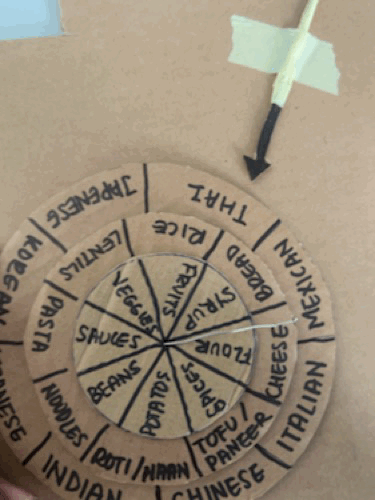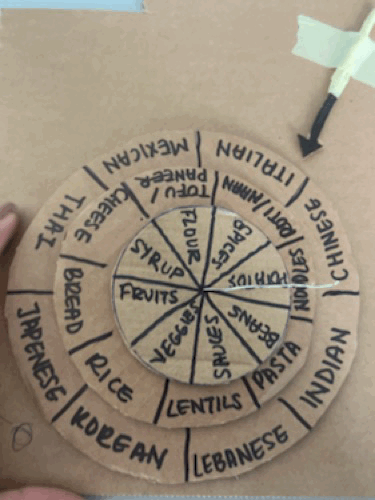

The journey begins with the shift from close-to-the-body interactions to on-the-body experiences, as we strive to evolve and learn from our initial forays into technology. This transformation leads us to explore a more intimate and personal relationship with the technological world that surrounds us. We recognize the significance of actively involving ourselves in the design process, immersing our senses and feelings into the development of these technologies. Prototyping takes on a new level of importance, becoming a tangible and integral part of our lives as we refine and perfect our creations. Ultimately, this journey culminates in an exploration of 1PP (First-Person Perspective) design intervention, where we seamlessly integrate our projects into the fabric of our daily existence, fostering a deeper and more harmonious connection between ourselves and the technology we've designed.
1PP (First-Person Perspective) design interventions place individuals as active participants within their environments, allowing them to instigate change while recognizing the limitations of their situated and partial knowledge. These interventions prioritize interactivity, transversality, and open-ended Research through Design (RtD) processes, fostering collaboration with and for others. In this context, knowledge acquisition, craftsmanship, augmentation, and socio-political aspects intertwine seamlessly. They engage with multiple temporal dimensions, uniting past, present, and future through collaborative and performative means. Furthermore, 1PP design interventions expand from the individual's body to encompass material flows, community interactions, socio-technical structures, and environmental infrastructures, promoting affirmative creativity. By emphasizing co-creation and a critical understanding of power dynamics, they enable a systemic perspective on the interconnectedness of various elements, ultimately working to decenter the human perspective and generate a complex appreciation of how entities relate to one another.
I created a lo-fi prototype made of just waste cardboard and wire to make a three layer spin the wheel concept that allows me to choose my meal for the day. The objective behind this activity was to explore new ways to diversify my culinary experiences and broaden my everyday eating habits.


Creating a prototype of a spin-the-wheel game with a focus on food, featuring fruits and veggies, grains, and various cuisines, was a fun and creative exercise. The objective behind this activity was to explore new ways to diversify your culinary experiences and broaden your everyday eating habits. Here are some reflections on the activity and its reasoning:
1. Exploration of Ingredients: The inclusion of wheels for fruits and veggies, grains, and cuisines encourages you to experiment with a wide range of ingredients. It can inspire you to try out new fruits and vegetables you may not have considered before, leading to a healthier and more balanced diet.
2. Culinary Creativity: This activity fosters culinary creativity by challenging you to come up with unique meal combinations. Mixing and matching different categories allows for exciting and unexpected flavor pairings.
3. Cultural Exploration: By including cuisines on one of the wheels, you're prompted to explore dishes from various parts of the world. This can expand your knowledge of different cultures, their culinary traditions, and flavors.
4. Breaking Routine: One of the reasons for creating this prototype was to break out of your typical eating habits. It's a playful way to avoid falling into a culinary rut and encourages you to try new things regularly.
5. Learning to Cook: This activity promotes learning how to prepare diverse meals, which is an essential life skill. Trying different cuisines can enhance your cooking abilities and knowledge of various cooking techniques.
6. Adapting to Dietary Preferences: It also allows you to cater to personal dietary preferences, whether you're a vegetarian, vegan, or have specific dietary restrictions. You can customize the categories on the wheels to suit your needs.
In summary, this activity serves as a playful tool for culinary exploration and experimentation, promoting a healthier and more diverse diet. It's an excellent way to step out of your comfort zone, learn new cooking skills, and develop a deeper appreciation for the world of food.
This activity focused more on emerging myself in a challenge that relates to the roots of my design space. I thought of multiple different ideas as my design space is very large and heavily detailed. Upon having my ideas looked upon on, I landed on the idea of going a whole day where I create all my beauty and hygiene products from scratch using easily found raw kitchen materials. This activity made me appreciate the resourcefulness of those who rely on DIY solutions for their daily needs, such as refugees who might not have access to commercial products.
Engaging in a day without using any store-bought hygiene or beauty products and creating my own from scratch was an enlightening experience. It made me appreciate the resourcefulness of those who rely on DIY solutions for their daily needs, such as refugees who might not have access to commercial products.
The foundation of many of these homemade products was baking soda for hygiene and coconut oil for beauty. It highlighted the versatility of these common household ingredients. Making toothpaste, face wash, face mask, lipstick, and deodorant using simple ingredients showcased the accessibility of these alternatives. This knowledge can be empowering for individuals who may not have easy access to commercial products or prefer more natural and sustainable options.
For refugees, in particular, knowing how to create their own hygiene and beauty products can be life-changing. Often faced with limited resources and unfamiliar environments, having the skills to make essential items from readily available ingredients can greatly improve their quality of life. It not only promotes self-sufficiency but also enhances their overall well-being and confidence.
Additionally, this activity allowed me to appreciate the wisdom of old Asian home remedies and practices. The use of ingredients like turmeric, gram flour, and beetroot tint demonstrates the effectiveness of traditional knowledge passed down through generations. These remedies often harness the power of nature to enhance beauty and hygiene, and they can provide valuable insights into sustainable and natural alternatives for modern life.
I learnt a lot from this activity, it taught how to resourcefully use homemade materials and how by being aware of these techniques I can potentially spread this knowledge for refugees. It was also comforting to use these old traditional Asian remedies that have been in practice for so many years.
In conclusion, this DIY hygiene and beauty product experiment not only offered me a deeper understanding of self-sufficiency but also shed light on the importance of these skills, especially for refugees who may benefit from such knowledge. It emphasized the value of exploring and preserving traditional practices, which can be both effective and environmentally friendly.
Offline Website Builder